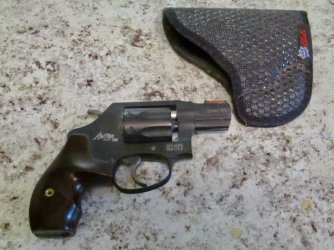Post 1,
Another "no" regarding a Mod. 36 S&W for a 1st/only handgun.
I'm actually surprised NY will even issue a permit without the person getting some type of prescribed training, some of which would expose the carry holder to different firearms. Even so, congratulations to that future handgun carrier.
The Mod. 36 (probably a 2" barrel version) might be good from contact shots out to whatever distance (an initial goal might be 5 yards) the user will become/feel competent in a given scenario and with limited capacity; and with arguably more difficulty in reloading. To go from 5 to 10 yards in competency could be training and practice with another 1000 rounds (~$500 ammo cost alone) of shooting.
OP, I suspect you've got some variety of handguns which, perhaps, you'd be willing to let your friend handle and shoot. I don't believe new shooters have to start with a revolver or a .22LR or similar. AFAIK, many, if not, all police (and military) academies aren't bothering with revolvers or .22LR-type handguns nowadays. Instead, the generally-issued handgun is likely used for training right from the start. Alternatively, if personally-owned-weapons are used, then a handgun from a list or being approved by management is another possibility.
Post 7, the money will need to be spent to, not only purchase the initial hardware, but for ammo and training. That $2500 is a good estimate.
Whether male or female, do read the "Choosing a Firearm" article in the referenced old website for further guidance.
Many things come to mind for a new concealed handgun carrier, which may include:
-cost
-size/weight/dimensions
-caliber, ammo types
-holsters (could be several)
-any physical limitations of the carrier/user/buyer/owner
-reliability
-ability to maintain
-perhaps other accessories wanted (like grips, etc.), to include cleaning gear; personal protective equipment (PPE); storage
It should instill confidence along with the user's training & proficiency.
It should be something the user will carry/use.
There may be needs for more than one firearm, due to different carry circumstances; or even just a spare should the primary go down for any reason.
OP, maybe let us know what this friend ends up getting.

